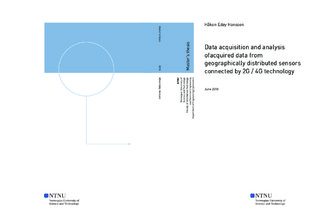| dc.description.abstract | The usage of the 2G/4G network geographically in distributed embedded systems has multiple advantages. One is the coverage of the network, which in most advanced countries covers the vast majority of the land area. Another is that the maintenance of the network is performed by the service provider, reducing the work necessary to maintain and implement the service. Despite these advantages, the usage of embedded systems, and development kits with cellular connectivity is relatively limited. The motivation of this master thesis has therefore been to do some of the early work within this field of embedded systems, by doing a study of existing embedded systems with similar functionalities, a review of the factors affecting the accuracy of predicting solar PV power production, and trying to implement an embedded system using the 2G/4G network to communicate with a cloud service.
This thesis will present the different kinds of hardware and software used to implement the system. It will also present the system specifications, how it was implemented, the result of the implementation and its limitations.
Due to timing constraints, lack of libraries and some bugs experienced when using the Digi API, the author of this thesis had to use a ESP8266 Wi-Fi module, instead of the intended Digi 3G Global cellular modem. The embedded system runs FreeRTOS to make it (near) real-time. It communicates with Amazon Web Services (AWS), the chosen cloud service, by using the light-weight MQTT protocol. A Python script running on a virtual Ubuntu machine retrieves the data transmitted by the embedded system and places it in a DynamoDB table. Scripts for scraping weather forecasts from Yr, and for generating plots run once every 24 hours. All scripts on the Ubuntu machine are run in the background and produces log files for remote debugging.
The complete system is still in its early stages. The 2G/4G has yet to be successfully implemented, and the current cloud service requires, among other things, improved security and scalability. | |

